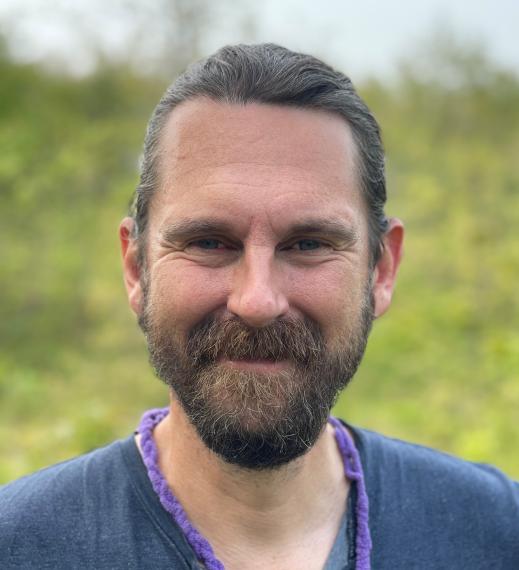Ryan Norris

Find Related People by Keyword
I'm an ecologist interested in behaviour, conservation, and evolution of migratory animals. Our lab addresses a variety of topics including effects of climate change and habitat loss throughout the annual cycle in seabirds and songbirds, the role of migration networks and seasonal interactions in predicting changes in population size, the development of optimal conservation plans for a range of migratory species, the costs and benefits of migration, and life-history trade-offs between different periods of the annual cycle. My research integrates behavioural and demographic field research with landscape ecology, theoretical and empirical modeling, and biogeochemistry. Our lab conducts field research in a number of locations including Algonquin Park, the BC Pacific coast, Costa Rica, the Bay of Fundy, and right here on the University of Guelph campus.
- B.E.S. - University of Waterloo (1998)
- M.Sc. - York University (2000)
- Ph.D. - Queen's University (2004)
- NSERC/Killam Postdoc, University of British Columbia (2006)
Migration represents one of the most complex and fascinating behaviours in nature. Found in a wide variety of taxa including insects, fish, reptiles, mammals, and birds, migration can span thousands of kilometres and occur over multiple life-history stages and habitats. Identifying the factors that influence individual success and population abundance requires knowledge of how events are linked throughout the migratory cycle. The primary obstacle, thus far, has been the inability to track individuals over large geographic distances, resulting in research that has been limited to isolated stages of the migratory cycle. This has made it challenging to determine how populations are spatially connected between periods and for understanding how events in one season carry-over to influence success in subsequent seasons. Novel technologies, such as stable isotopes, trace elements and radio-telemetry are beginning to bridge these gaps by providing the ability to integrate life-history and demographic information throughout the migratory cycle. The long term goals of my research are: (1) understand how events within and between seasons interact with behaviour and habitat quality to influence population abundance and life-histories, and (2) parameterize and develop a set of predictive models that can be used to test aspects of life-history evolution and population dynamics in migratory animals, (3) develop and refine sets of accurate and non-invasive methods to track individuals over large geographic distances, and finally (4) apply year-round populations models to construct optimal conservation plans that can be used for a variety of species worldwide.
-
For full list see www.norrislab.ca
-
Polley, M, Linton, JE, Brewster, A, MacKenzie, AS, Keyghobadi, N, Steiner, J, Kerekes, T & Norris, DR. 2026. Reintroduction of an endangered butterfly, the Mottled Duskywing (Erynnis martialis). In press: Animal Conservation.
-
Flockhart, DTT, Nicol, S, Chades, I, Mitchell, GW, Martin, TG, Fuller, RA & Norris, DR. 2025. Optimal conservation of migratory monarch butterflies requires immediate action and international coordination. Current Biology 35(16): 4011-4018.e4.
-
Mueller, SD, Wheelwright, NT, Mennill, DJ, Newman, AEM, Doucet, SM, Burant, JB**, Dobney, SL, Mitchell, GW, Spina, HA, Woodworth, BK & Norris, DR. 2025. Population density and timing of breeding mediate effects of early life conditions on recruitment. Biology Letters 21:20240689.
-
Duali, J, DeLuca, WV, MacKenzie, SA, Tremblay, JA, Drolet, B, Hache, S, Roberto-Charron, A, Ruiz, M, Boardman, R, Cooke, HA, Rimmer, CC, McFarland, KP, Marra, PP, Taylor, PD & Norris, DR. 2024. Range-wide post- and pre-breeding migratory networks of a declining Neotropical-Nearctic migratory bird, the blackpoll warbler. Scientific Reports 14:30229.
-
Pickering, JK, Bradstreet, MS & Norris, DR. 2024. Less is more: Vegetation changes coincide with white-tailed deer (Odocoileus virginianus) suppression over thirty years. Wildlife Monographs 214(1):e1080.
-
Fuirst, M, Strickland, D, Freeman, NE, Sutton, AO & Norris, DR. 2023. Early-life sibling conflict in Canada jays has lifetime inclusive fitness consequences. Proceedings of the Royal Society, London: Biological Sciences 290(197): 20221863.
Whether in the field or the classroom, my philosophy is to provide students with an atmosphere that will allow them to enjoy the material and develop higher level learning skills rather than simply regurgitating material. I strive to get students to evaluate, analyze, and synthesize information while providing them with a solid theoretical background. In the classroom, I rely partly on student participation and peer learning. In the field, I allow students to develop and execute hypothesis-based research on a wide range of topics in behaviour, as well as population and community ecology.
Courses Taught
- BIOL*4410 - Field Ecology in Algonquin Park (Summer 2025)
- BIOL*3010 - Lab and Fieldwork in Ecology (Fall 2025)
If you are interested in any of the research areas outlined above, please feel free to contact me via email and make sure to include a short cover letter, CV, and unofficial transcript. I am open to novel and creative research ideas and I worked closely with my graduate students to develop and refine their thesis topics. Typically, my students have a field component to their research but I will also supervise students conducting purely theoretical work as well. I strongly encourage students to write a series of publications that will eventually form the chapters of their thesis.
- Norris Lab
- MOTUS Wildlife Tracking System
- Queen's Facility for Isotope Research
- Centre for Applied Conservation Research
- Centre for Wildlife Ecology - SFU
- Advanced Facility for Avian Research